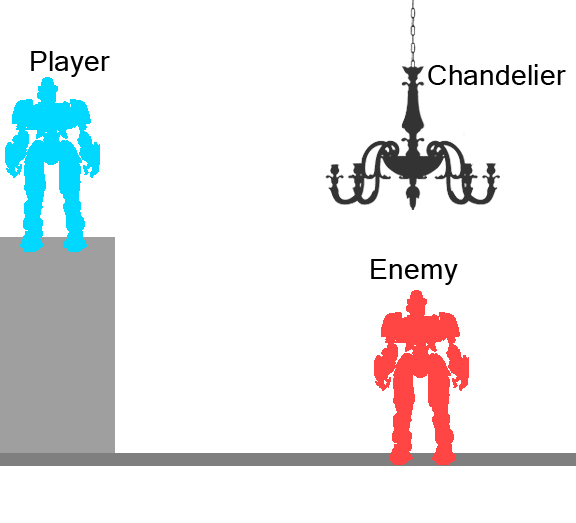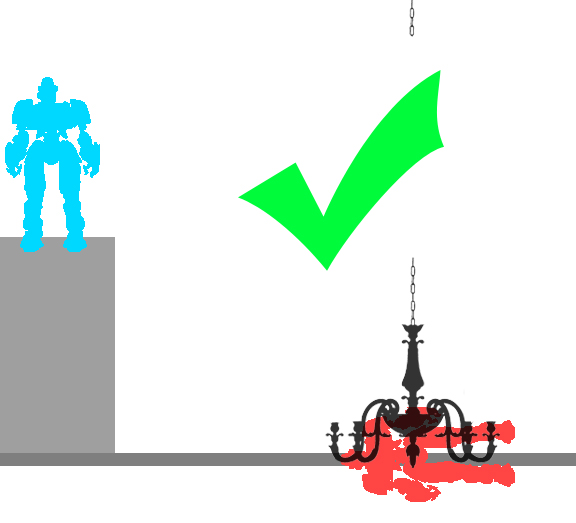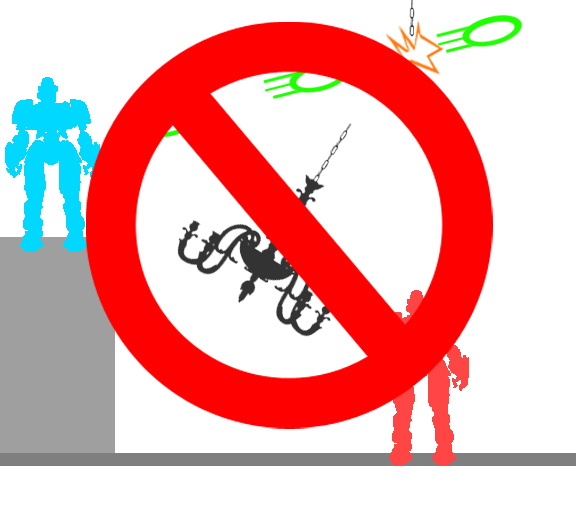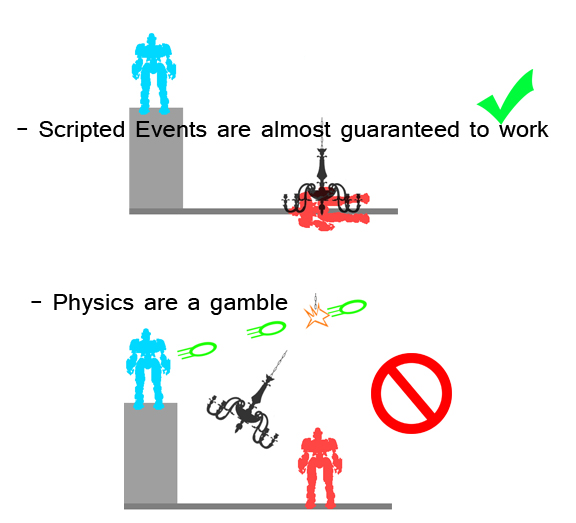Note: A few details were changed in order to protect the identities of the people involved.
The room was relatively empty. Just the staircase for the player to walk down from, the chandelier and the locked exit door for the player to escape from once the enemy is taken care of.
Once the chains are shoot by the player the chandelier will fall from the ceiling and crush the enemy. This is the only way for the player to move forward to the end of the level.
It was now my turn to give the level a try. I played through the first few rooms with no issues. I finally got to the last room and I fired straight at the chandelier....and it just swung around the ceiling. I fired at it over and over again and it just kept swinging in place. It finally just shot off the ceiling and flew into a corner of the room.
Time to run the numbers. If I shot at the chandelier ten times, and it fell on target twice that would mean there would be an 80% chance of it going wrong.
So think of it like this, if you were to knock an apple off of a tree using a rock, would you be able to make it land exactly where you wanted every time? There are so many things you would have to factor in when you through that rock, not to mention that once you hit that apple you would have no control over how fast or where it would fall. You can not predict the course it would take.
My friend was very adamant about having the chain be physics based because "It was cool". So they turned to me and said "Nope". They decided that having that random element was a lot more interesting than a scripted event. I know a lot of people hate scripted events (I do too) but in this scenario it made the most sense.
You never want to purposely design a "No Win Scenario". The worst part about this chandelier fiasco is that it always has the chance of going wrong. These kinds of scenarios are cheap and frustrating. No one ever wants to play a game where you fail due to things that are out of your control. As designers we should try and take as much control over the game as we can so that we may create enjoyable obstacles for players to engage in.
I heard from a few other people that my friend went ahead and showed off their level. As I predicted the chandelier sequence broke during the run through. In fact, they had to start over three times before they gave up and ended the walk through.
Follow us on Tumblr, IndieDB, Twitter, Mixcloud,Soundcloud,Twine, instagram and Youtube












 RSS Feed
RSS Feed
